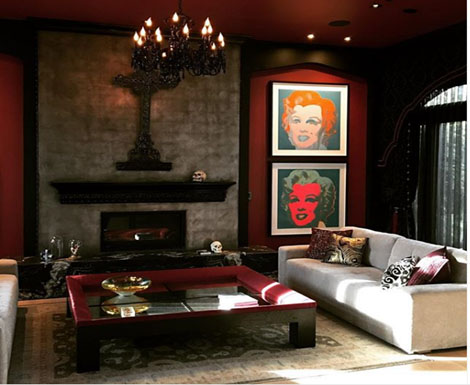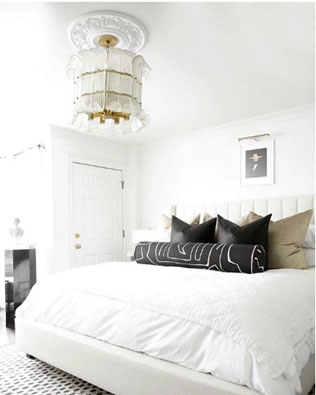If there is one way to describe the interior design trends we will see more of in 2020, it’s anything goes. While signature the looks of 2019 and the early aughts like accent walls and all-white kitchens won’t be going away entirely, they will certainly evolve in the upcoming years.
I spoke with several experts, interior and furniture designers who all emphasized that when it comes to design in the next decade, individuality will be extremely important. Those into crafting, DIY design, or commissioning custom pieces, will likely have lots of projects to take on in the New Year.
Off-Trend Will Be On Trend
Tired of seeing the same styles over and over again? So is everyone else. Los Angeles based interior designer Delta Wright says overall anything “uber-unique” will shine in the upcoming decade. “[We will see] highly crafted, unusual materials meticulously featured in furnishings and architecture.”

But to be clear, this is not about having the most unique sofa or one-of-a-kind hand-blown glass bowl, so much as true authenticity. Christiana Coop, who is the co-founder of Hygge & West, explains that uniqueness should reflect individuality. “People are designing their homes to reflect their personalities and creating spaces that tell their story. What makes you truly happy is more important than what you see in magazines or on social media.”
Timeless Looks That Can Evolve
In recent years, there has been an emphasis on developing a personal style. So, whether it’s a renovation or simply purchasing furniture that they really love, consumers are thinking more long-term than they have in the past. “This is also in line with being more aware of the ecological implications of purchases,” says Coop.
She believes that people will be buying fewer, but more high-quality pieces. This could mean that fast furniture and decor may be on their way out.
Sustainable Materials
Along these lines, sustainability has become increasingly more important. As society gravitates towards more eco-friendly lifestyles, people are more ecologically conscious and knowledgeable than ever before. “There’s an ethical component to their purchasing decisions,” says Ben Marshall who is the creative director of Hudson Valley Lighting Group.
This is being reflected in an overall design sensibility as well as a desire to bring warm, earthy elements to a space. “We’ve answered this demand at HVLG by featuring sustainably harvested materials like acacia and rattan in many of our fixtures,” he explains.
Swags and Easy-To-Use Fixtures
“Portables are no longer limited to table and floor lamps. Now, even renters can tailor a space with swag fixtures,” says Marshall.

Lighting fixtures do more than brighten up a room—they’re a bold detail. This is exactly why wall sconces with optional wire guard will become increasingly more available. These accents are ideal for anyone who wants to invest in statement lighting without the commitment of hardwiring. “If you want great design but are restricted by your existing space, these fixtures hit a sweet spot. Its cultured form meets convenient functionality.”
Countryside Chic
While the typical farmhouse look is becoming as tired as a Live, Laugh, Love sign, this style will lean towards a more sophisticated, European-inspired look, according to Rebecca Breslin of Wayfair Professional.
“A fresh take on British farmhouse without being stuffy or dusty [will be popular in for 2020]. Pulling from classic prints and materials while adding whimsy. This trend is all about mixing patterns, antique with new decor as well as paying homage to the countryside with botanicals and muted primary tones,” she says.
Colours Will Become the New Neutrals
Neutrals will be replaced by warm colours, saturated hues and jewel tones, according to Coop. “Tiles, cabinetry, and walls all serve as opportunities for more colour,” she says.
Dolley Levan Frearson who is the co-founder of High Fashion Home predicts shades of pink (which are a more sophisticated evolution of the millennial pinks we’ve seen in recent years), will be strong in 2020. “I also see a lot of soft peachy corals and terra cotta—colors that feel soft yet grounded in earth tones. I also love golden yellow tones in lush fabrics like velvets to buttery, caramel leathers or leather-look,” she says.
Patterned Everything
Pattern, especially layered patterns are becoming more prevalent for tabletop and textiles designs. The key to this trend is that there aren’t any rules.
“We’ll be seeing more patterns mixing with colour tying together patterns of varying origin and scale,” says Coop. “Pattern matching, e.g. where the same pattern flows from the wall to upholstered furniture or bedding, is also becoming more common.”
Bold Trim and Ceilings
Kelley Mason, stylist at Lulu & Georgia says high contrast design is making a big comeback. “[It gives] an otherwise more monochromatic room a crispness and a fresher take on neutrals,” she says. “Bold black and white feels fresh yet timeless, especially in graphic or Art Deco inspired patterns.”
Coop notes that this style is easily achieved through moldings and trim. “Make it colorful and contrasting, create a monotone space by matching it to the wall color, or high gloss paint that’s usually reserved for trim to extend to the entire wall,” she says.
Wallpapered ceilings are another way contrast can be incorporated into a room. “There is no better surface for wallpaper because it won’t get damaged and the large expanse of space makes for a truly dramatic feature of any room. We’ve been seeing wallpapered ceilings in powder rooms and expect to see more in bedrooms and living spaces in the coming year.”
Natural Luxury
“We’ll be seeing more natural materials with a luxurious spin like marble finishes in bathrooms and kitchens and also marble accents such as vases, bowls and candleholders. Linen will also be big, but in beautiful jewel tones, with finished edges that feel more polished than the raw edge boho take we’ve seen in the past,” says Coop.



















Your Message